

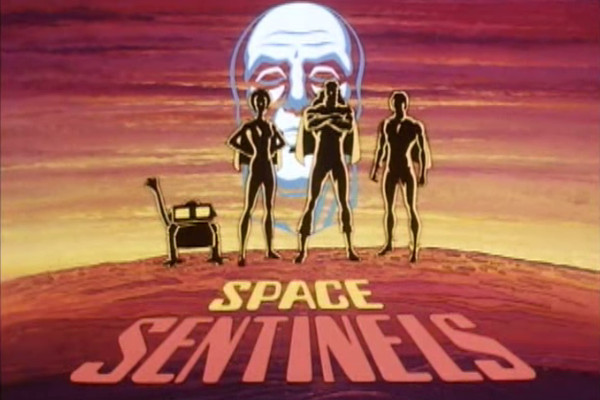
The series is available on DVD from Amazon. To celebrate the 40th anniversary of the series airing on the BBC, please join me as I rank the episodes from worst to best...
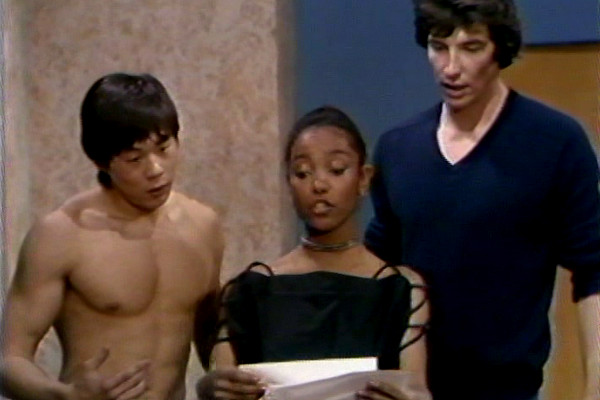
Presented on the DVD boxset without real context, this five minute video clip is listed as a Young Sentinels "Live Action Audition", yet appears to be more of a rehearsal. Believed to be the actual cast of the cartoon series, it's not clear if this was an intended pilot pre- or post-series; the one thing that can be confirmed is how dire it is.
Like the worst kid's show ever made, it features overacting and a lack of chemistry that's concealed by the animated episodes, all of which had better scripts. As just a "dress rehearsal" in an office, there's every chance that, had it been completed, it could have been The Wire over thirty years early. Sadly, all we have for evidence is this brief clip, an odd curio free of explanation, so we'll never know...
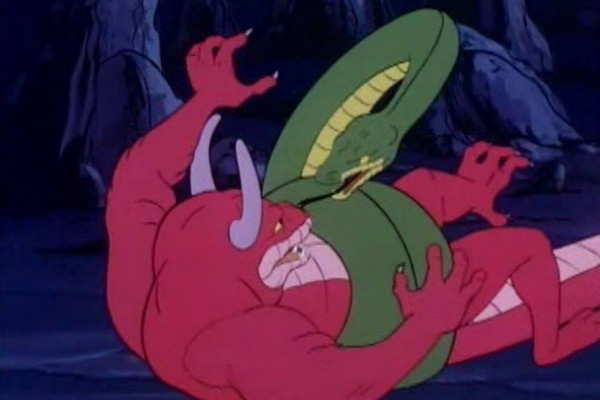
The sole episode of writer Jerry Winnick, Voyage to the Inner World begins with Mercury playing a game of hyperfast baseball with himself, but then just seconds later he's slow enough to be caught with a freeze ray. Eventually the Sentinels track down an underground society where a dying queen is trying to extract Astraea's brainwaves in order to extend her own life. (Interestingly, the Queen is able to take on Astraea's shapechanging abilities after absorbing just a bit of her brainwaves, suggesting the power is entirely mental) M.O., the Maintenance Operator robot who has a bizarre, almost stalkerish fixation with Astraea, sneaks out of the ship to help save the day.
Filmation don't have a particularly high reputation when it comes to animation quality, and many people involved (such as Donald F. Glut, the writer of The Return of Anubis) have made it clear how little they regarded their work for the studio. Probably best known for He-Man and the Masters of the Universe, a Star Trek cartoon series, several DC comic adaptations and The Archies (including the video to the hit record Sugar Sugar), the studio cut corners with a "limited animation" policy.
This reduced costs and allowed them to crank out extra product, and included: minimal animated elements (often the Space Sentinels will be stock still except for a moving mouth); reuse of footage, regardless of how it affected continuity; and long, slow pans over painted backdrops to pad out the runtime. While this can be distracting (in the aforementioned The Return of Anubis Hercules manages to get up from a blue table with a pyramid over it and into his regular spot on the control desk without any explanation) if accepted as part of the deal, it can actually add to the primitive charm.
However, this lack of real care reaches shocking depths at the start of this episode, where a line of Hercules's is actually animated with footage of Sentinel One speaking. It's this slap-dash, "it'll do" attitude of the studio that can drag things down, and make what is a fun series for kids seem almost too patronising. Audiences can tell when they're being lied to, and while most of Space Sentinels has a quaint appeal, this particular instalment shines through with what amounts to almost condemnation of those watching.

While many of the Space Sentinels episodes have the same writing teams (with Kathleen Barnes, David Wise and J. Michael Reaves managing seven episodes between them) there are four "one shots", where a writer will work on a single episode. These are especially interesting to see how much they "got" the overall style of the show.
Writer Dale Kirby gives a confusing account of the series in this, his sole episode, having the group meet real Norse Gods from another dimension. It's a little odd as the Sentinels themselves are stated to not be named after ancient legends, but actually are those "legends", living for eternity and having their reputation grow throughout the centuries. Overall, it's a bit of a silly episode, with even the stoic leader, Sentinel One, stopping to crack a joke before the end credits.
In terms of trivia, then the series was originally titled "The Young Sentinels", and renamed to the more familiar title from this episode onwards, reputedly by the network in a desperate bid to draw in more viewers off the back of Star Wars's popularity. Although all the episodes have long since been repackaged with the new credit sequence, it is notable that the team are addressed, or refer to themselves, as "Young Sentinels" in no less than seven episodes, including this one.
The Star Wars connection isn't denied by the makers, with storyboard director Robert Kline openly confessing they'd been inspired by not just that movie, but also Silent Running: "We were very influenced by the latest science fiction successes in the theatres, and wanted to do something that had that kind of excitement and feel, and was contemporary."
Yet the dates don't quite add up: the first submitted script for the series was dated April 19th, 1977, a month before Star Wars came out in cinemas. However, with a long gestation period (the final first submissions were dated September 16th) it's entirely possible that they were adapted to fit the ubiquity of Star Wars, becoming more like it as the months ran on. Despite this, it never feels like a cheap Hollywood knock-off, with the series very much its own strange hybrid between straight SF and superheroics.
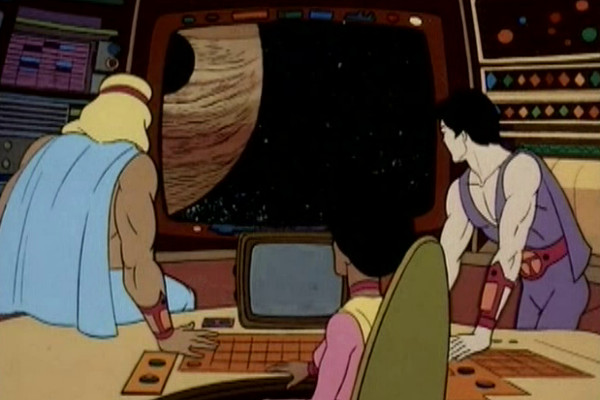
With every episode of the series lasting just 22-24 minutes, then it's no surprise that sometimes narratives can be curtailed. However, this reaches its lowest point here, with a robotic creature that wants nothing to do with humanity, but then decides to become best friends with the Sentinels in about two seconds flat. It makes for a very easy "fix" in an episode that lacks true dramatic incident.
The creature, Gart, gives them all they need to defeat an out-of-control spore from Jupiter, as they bring back a predatory plant. Although no one would be likely to watch Space Sentinels for strict scientific accuracy, seeing the team land on the gas giant and encounter a solid surface is a step too far in one of the blandest episodes.
Writer David Wise admitted that he became bored while writing the series, and devised scenes such as Hercules throwing a vintage car into space purely to keep himself interested in the work. Ultimately the biggest highlight in this one is two scientists at a research facility, both of whom call each other "Brad".

Fauna is a 16-year-old feral girl who grew up with wolves, developing, quite naturally, a telepathic communication with all forms of animal life. She uses this to get the animals to regularly attack an animal testing centre, though, as this is a kid's cartoon, it's not something in violation of PETA rulings, it's just a guy who wants to make a ray that will turn eggs into chickens in seconds.
Fauna is able to hold off the Sentinels, and all seems to be going well until one of the wolves jumps into the Mutator Ray and turns into a half-human mutant intent on world conquest. Saturday Morning Cartoons of the age had strict guidelines which they could not breach, and violence was avoided, a troublesome factor when producing an action adventure series. While most of the series gets by and is generally above needing a "punch up" to enliven events, this one drags and doesn't really get out of first gear.
It's not known how popular Space Sentinels actually was. Even with the name change, the programme didn't last beyond its 13 episode season, and is perhaps more remembered over in the UK, where it was repeated multiple times on the BBC. The first four episodes aired on BBC1 in October 1978, with the rest of the series broadcast from January-March 1979. After this, the BBC screened the series every single year for the next four years, creating the impression that there were far more episodes than there actually are.
With the series not having a massive fanbase, being able to track down a full list of merchandise is also difficult, but it's a surprise to find that there was some, and not just modern tie-ins created for a nostalgia market. Magnetic figures based on at least Hercules and Astraea were released in 1978, along with a "rocket explorer" toy. That same year also brought out an "Activity Book" from Rand McNally & Company, and, perhaps inevitably, a colouring book.
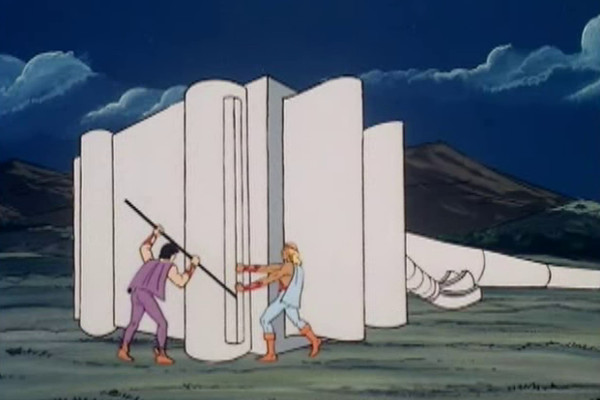
While "sophisticated" is perhaps not a word that could be used to describe Space Sentinels, it's slightly more advanced than a lot of other cartoons of the time, featuring some plots that deal with ecological concerns, and steers away from "flashier" or more "obvious" characterisations, save for the hum-drum antics of "light relief" robot MO.
However, Space Giants is the series at its most kiddified, featuring an actress using giant robots to pretend to be an alien invasion fleet, there to steal gold. Eventually the giant robots want their own independence, and have to be stopped... Hercules and Mercury manage to trap them in an opening earthquake fault line, which conveniently closes with several tonnes of metal inside it, and yet doesn't damage the environment.
The "banter" between Mercury and the slightly bland character of Hercules is one of the series' lower selling points, as the two make terrible jokes, and have some weirdly passive-aggressive "bromance" to try and assert which one of them is the alpha male. Better, in spots, is the musical score. While it contains many repetitive cues and themes that are heard in other Filmation productions, it does feature one incidental suite, heard when the gold vault is breached, that's vaguely reminiscent of Fabio Frizzi's score for the 1979 Italian movie Zombi 2.
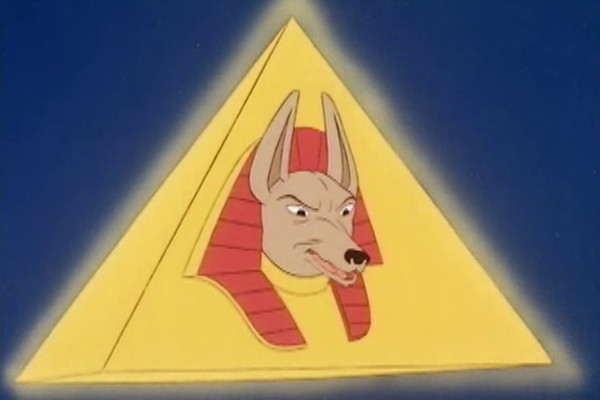
Throughout the series, it's astonishing just how much work Astraea (voiced by Dee Timberlake) has to put in for her role in the team. Mercury has superspeed at any time except when he actually needs it, so is usually the first to be incapacitated, and Hercules isn't much better. But here their lack of thought seems borne out of selfishness, as the team battle an alien that came to Earth 5000 years ago and was buried in a pyramid.
First of all, Astraea has to carry the two of them miles across desert in the form of a talking camel, claiming that "one of you wise guys has a lumpy wallet." As they're never seen carrying money and have no pockets, it's disturbing to wonder what was really poking Astraea in the back all that way. But things get even worse when they arrive at a pyramid and the two of them watch Astraea turn into a mole to dig underground.
Hercules, the man with the strength of a hundred, and Mercury, a man with superspeed, are both shown getting into the pyramid in seconds after they go in to rescue the captured Astraea... yet both stood back and didn't offer to help her in the first place, even when she'd almost broken her back carrying the pair of them miles across desert.
In fairness, this lack of chivalry was Astraea's own idea, as she realises that a cautious, subtle approach is needed against Anubis, one of the most powerful foes the Sentinels have faced, and one who is on the verge of defeating them all. Sentinel One saves the day by advising Anubis to go back in time and return to his home planet before it was destroyed.... two episodes after The Time Traveler, where Sentinel One says how dangerous time travel is.